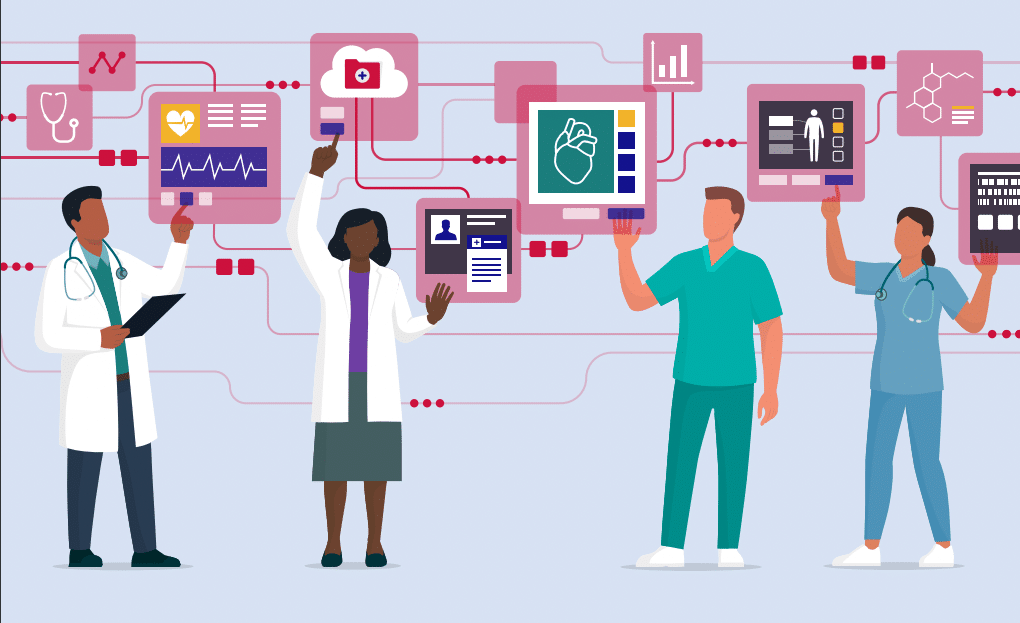When Seconds Count: Optimizing VDI in Healthcare
May 19, 2023
Picture this: you arrive at your doctor’s office, anticipating a timely and efficient appointment. However, as you settle into the waiting area, moments turn into minutes. Soon enough, the doctor emerges, offering an apologetic smile. “I’m sorry for the delay,” the doctor explains, “the systems are slow today.”
Virtual Desktop Infrastructure’s Impact on Patient Care
Virtual Desktop Infrastructure (VDI) in Healthcare enables the delivery model for Electronic Medical Records (EMR) systems. As the environments expand and gain complexity, the pivotal technology stack becomes more sensitive to changes and degradation, leading to scenarios like the doctor’s slowness.
IT teams can prevent tickets by validating changes pre-deloyment using virtual users to mimic user actions.
By using virtual users IT can simulate real-world performance of their environment and ensure end-users’ ability to provide patient care.
How Healthcare IT Teams Can be Proactive and Prevent Tickets
Login Enterprise deploys virtual users that understand how healthcare professionals interact with EMR tools and can mimic typical user behavior—for example, logging on, launching the EMR, and looking up a patient’s record.
As the virtual users perform each step, they measure the response times in milliseconds, allowing IT to monitor the performance closely. Before creeping degradation starts to manifest, thresholds for each response time can be used to trigger automated alerts that can integrate into your existing IT Service Management (ITSM) ticketing platform.
For example, IT can quickly identify this issue if the virtual users were experiencing increasingly slower times when connecting to an EMR database instead of relying on end-user tickets.
Ticket complaints are subjective to the users’ opinion of good or bad and fail to provide an adequate measure for troubleshooting information, such as “It’s slow”.
These timers provide a constant feedback loop for pre-production optimizations. Login Enterprise also simulates the user experience at scale and measure the performance impact as the system becomes under greater loads.
Problematic steps within production workflows can be identified and serve as the focal point for optimizations giving IT a head-start on identifying the necessary course of action.
In addition, the same performance timers can be observed in the lab to ensure that performance levels measured in production are, in fact, being or improved by the change.
Using Virtual Desktop Infrastructure in a Healthcare Setting

Healthcare organizations face unique IT challenges and must meet specific requirements to ensure efficient and safe patient care. In fast-paced healthcare environments, operational excellence is crucial to enabling healthcare professionals to quickly access patient data, reducing the risk of errors that may compromise patient care.
In addition to adequate care, compliance with regulations like HIPAA is also of utmost importance, so organizations proactively address performance issues that could impact data security and privacy.
Through virtual users healthcare IT teams can identify and resolve problems before they affect patient care and optimize system performance to achieve greater productivity among staff, reduce costs related to performance issues, and ultimately provide high-quality service.
How to Navigate Complex Technology in Healthcare
In a recent conversation, I was asked by a healthcare VDI team if Login VSI had ever done official testing around Windows Fairshare and its performance impact on Epic.
Fairshare enables shared CPU consumption between concurrent users, rather than shared CPU consumption between processes, to deliver more consistent performance across sessions. Using our Virtual Users to simulate and compare the A/B scenario, the results were clear: the logon experience became 11% faster by disabling Fairshare, and application response times were 9% faster.
While the overall times were faster on average, the variance in response times was greater. In effect, Windows Fairshare provided a more consistent performance across sessions, but it was not necessarily better.
When significant changes arise, like changing hardware vendors, EMR version upgrades, or cloud migrations, the only way to understand the true performance and cost impact is to execute a real-world scenario and compare the response times across configurations.
Our healthcare customers have avoided devastating consequences by utilizing virtual users data rather than solely vendor guidance and whitepapers. As a result, they could also make data-driven decisions on the best price-to-performance options for future technology options.
Want to learn more best practices for managing your EHR or EMR solution? Watch our webinar on Finding the Cure for Digital Workspace Reliability or grab a copy of our recent whitepaper on Optimizing Epic Environments.
Healthcare


